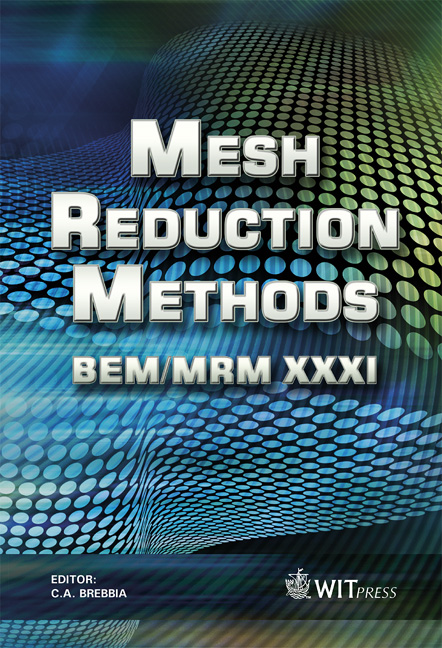The Boundary Element Method For The Determination Of Nonlinear Boundary Conditions In Heat Conduction
Price
Free (open access)
Transaction
Volume
49
Pages
11
Page Range
45 - 55
Published
2009
Size
276 kb
Paper DOI
10.2495/BE090051
Copyright
WIT Press
Author(s)
D. Lesnic, T. T. M. Onyango & D. B. Ingham
Abstract
Physical problems involving heat exchange between the ends of a rod and the surrounding environment can be formulated as a set of equations representing the heat equation and boundary conditions relating the heat fluxes to the difference between the boundary temperatures and the temperature of the surrounding fluid through a function f which represents the heat transfer coefficient. When the heat transfer is purely convective, or solely radiative, then one assumes that f is a linear functional (Newton’s law of cooling), or obeys a fourth-order power law (Stefan’s law), respectively. However, there are many practical heat transfer situations in which either the governing equation does not take a simple form or the actual method of heat transfer is unknown. In such cases the heat transfer coefficient depends on the boundary temperature and the dependence has a complicated or unknown structure. Processes, such as fast cooling of hot steel or glass in fluids or gases, involve limited opportunities to accurately measure the temperatures and heat fluxes at the surface and in such a case one has to set up an inverse problem that would allows us to reconstruct the exact form of the function f. In this study, we investigate a one-dimensional inverse heat conduction problem with unknown nonlinear boundary conditions. We develop the boundary element method to construct and solve numerically the missing terms involving the boundary temperature, the heat flux and the boundary condition law function f which is approximated as a piecewise constant function of temperature. Since the inverse problem under investigation is ill-posed, in order to stabilise the solution we employ the Tikhonov regularization method. Numerical results are presented and discussed. Keywords: boundary element method, nonlinear boundary conditions, inverse heat conduction problem, Tikhonov’s regularization.
Keywords
boundary element method, nonlinear boundary conditions, inverse heat conduction problem, Tikhonov’s regularization





